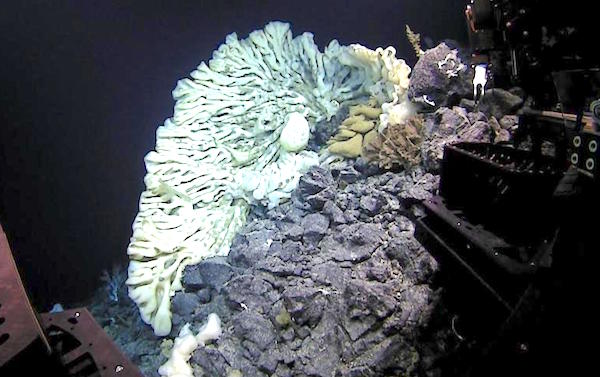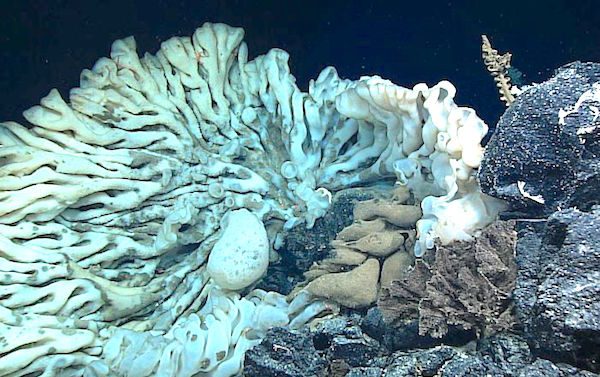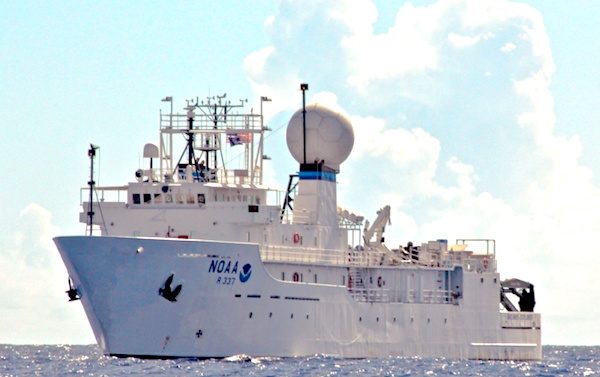A minivan sized sponge discovered in the deep waters of Hawaii, stretching more than 12 feet long and 7 feet across, becoming the largest sponge known to exist anywhere in the world. The Papahanaumokuakea Marine National Monument is a marine outpost near Hawaii, where the discovery was made.
The massive sponge was found living 7,000 feet beneath the surface of the Pacific Ocean, the Washington Post reports. Discovery of the largest sponge in the world was profiled in the journal Marine Biodiversity.
The Okeanos Explorer was out searching waters around the monument, utilizing remotely operated vehicles (ROV’s) to look for unusual animals. These explorations were being carried out at depths between 2,300 and 16,000 feet beneath the waves.
Today, scientists know more about the moon and some alien worlds than they do about select regions of the ocean floor. “Where did this guy come from? Holy cow!” one researcher said to his colleague. During the moment caught on camera, the brain-like curves of a sponge about the size of a minivan came into view, NPR News reported. As one of the scientists exclaimed in the video, “This is the largest thing I’ve seen underwater.”
“The largest portion of our planet lies in deep waters, the vast majority of which has never been explored. Finding such an enormous and presumably old sponge emphasizes how much can be learned from studying deep and pristine environments such as those found in the remote Papahānaumokuākea Marine National Monument,” said Daniel Wagner, Ph.D, leader of the mission which recorded the unusual creature.
Sponges are among the oldest, as well as the simplest animals found anywhere in the world. Little is known about the primitive animals, but they do live for extensive periods of time. Some sponges living in shallow water are believed to be over 2,300 years old.
These aquatic animals often grow to massive sizes, and provide significant benefits to the marine environment. They are capable of filtering vast quantities of seawater, while also serving as a home for a diverse variety of invertebrate lifeforms. Although some of the sponges used for household cleanup are natural, most are made of plastic polymers or wood fibers.
The Okeanos Explorer is currently the only ship funded by the United States government specifically tasked with exploring the ocean for new discoveries. The research vessel launched for the first time on August 13, 2008.
The International Business Times said the vehicle has toured both the Pacific and Atlantic oceans, mapping previously-uncharted territory. Scientists aboard the Okeanos Explorer also prowled the Gulf of Mexico, looking for undiscovered forms of life.













